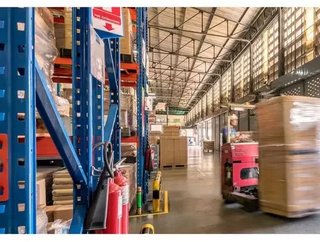Supply Chain Agility Powered by AI

As the COVID-19 pandemic continues to drive disruption across industries, many professionals may find themselves faced with more of the dreaded supply chain trade-offs than usual. Given the turbulent world, we’re living in; businesses will be asking similar questions; do we prioritise cost? Speed and agility? Resilience? The list goes on.
There’s no denying that trade-offs are part and parcel of any supply chain strategy at some level, despite the aspirations of concepts such as ‘ambidexterity.’ However, there is another way of looking at them, and a different approach you can take. It involves placing an added focus on switching between these focuses, essentially decreasing the time between these states to give agility, enabled by artificial intelligence (AI).
The continued uncertainty that clouds the supply chain sector is resulting in teams being forced to make extremely complex, and potentially costly, decisions. Given current levels of demand, what products should you use? How often should you run certain machines? Which suppliers should you use? How much of certain materials are you going to order? These are all hugely complicated decisions, and it takes vast amounts of management resource and time to make the correct ones.
Of course, there are tools and systems out there that can help. However, in my experience, I think it’d be fair to say that the vast majority of information systems are built for more ‘steady-state environments.’ Given the huge amounts of volatility, we’re currently seeing, these systems are under more pressure and aren’t built for this kind of scenario. This results in more stressed supply chain teams, spending a lot of time running around and trying to make the right trade-off decisions with little more than gut-feel to rely on.
Investing in Agility
“Agility does trump forecasting. At the end of the day, every dollar we spent on agility has probably got a 10x return on every dollar spent on forecasting or scenario planning." –– Marc Engel, Chief Supply Chain Officer, Unilever
AI can be a real game-changer for supply chains in the current climate. It can power smarter, data-driven decision making, allowing you to ensure your supply chain is as agile as possible. Being agile and dynamic enough to react to volatility, for me, offers benefits that could be potentially more fruitful than trying to understand that volatility in the first place.
Yes, even with AI, there will still be some trade-offs that you need to make. However, rather than having everything set in stone from the beginning, you can be more flexible and reactive. For instance, you may initially optimise for, say, resilience, revenue or profit. With AI, to change those optimisations is essentially just a flick of a button or a case of rerunning a particular model. As the environment continues to change, you can adjust the way your operations are running and adapting. This aids decision making around the configuration of supply, and takes away some of the hours you’d otherwise be losing stuck in spreadsheets, combing through lots of data manually.
Take demand forecasting as an example. This is a hot topic at the moment, and many may find themselves reaching towards a new demand forecasting solution in a bid to better understand current volatility and make the correct decisions around inventory and how much stock to hold.
For me, this is potentially the wrong approach, since a wider perspective is required. The brutal truth is that there are some aspects of demand that are simply just random, that no system in the world can help forecast. You can have the most accurate forecast possible, but levels of uncertainty will always be there. Rather than focusing on just one piece of the puzzle, the focus should be on agility as a wider concept.
What does this mean? It means looking at things like safety stock levels and making them more dynamic while understanding profitability and trade-offs in the stock you’re holding to try and make your organisation more optimised for the external and internal business conditions it finds itself in. So, rather than putting in place fixed rules based on a forecast or supply assumptions that are updated infrequently, for a particular context, you’re instead constantly reassessing what you should be holding based on multiple factors; potential demand, volatility, profit, and how your supply base is behaving. With AI, you can also predict supplier behaviours and feed this data back into your safety stock to add even more intelligence.
To summarise, instead of teams having to deal with multiple systems and spreadsheets which are sucking up all of your management time and resources, it’s possible to model different scenarios and ask AI some crucial questions; ‘Given this level or certainty of demand, what’s the optimal level of stock we’ve got to hold? What’s the optimal shift patterns or production runs we’ve got to make? What’s the minimum order quantity?’ With this approach, and by investing in agility, you’ll alleviate all of those trade-off concerns whilst powering reactive, dynamic decision making across your entire supply chain.






